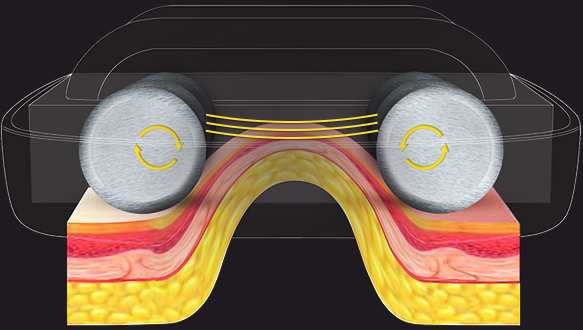How Important It Is to Fight Collagen Loss
Collagen is a pivotal structural protein, significantly prevalent throughout the body. It has its presence in diverse tissues inclusive of skin, bone, muscle, blood vessels and tendons among others. Collagen endows these tissues with considerable strength and elasticity. The integral role collagen fulfills includes preservation of skin’s firmness, engendering its elasticity while concurrently maintaining balanced moisture levels.
Collagen loss can be very distressing for many people. There are many reasons for collagen loss. As a person ages, the natural production of collagen decreases. In addition factors such as UV radiation, environmental pollution, and poor lifestyle habits (e.g. smoking, excessive alcohol consumption) can cause collagen loss to accelerate. Factors such as hormonal changes, stress and poor nutrition may also affect collagen production and stability.
Collagen loss can have a dramatic impact on the skin. Lost collagen leads to loss of skin elasticity, wrinkles and sagging. Loss of collagen may also cause the skin to become prone to damage and discolouration. This can even cause the skin to become dry, rough and lose its lustre and firmness.

The Importance of Collagen
Collagen is one of the most prominent protein components in the skin, occupying one-third of the skin. It forms a fibrous structure and interacts with other components such as elastic fibres and hyaluronic acid to provide strong support and elasticity to the skin. It forms a fibrous structure and interacts with other components such as elastic fibres and hyaluronic acid to provide strong support and elasticity to the skin.
The main functions of collagen are: anti-aging, enhance immunity, promote weight loss, lighten dark spots and so on.
- Maintaining the elasticity and firmness of the skin: Collagen is one of the most important components of the skin, which can promote the growth and repair of skin cells, maintain the elasticity and firmness of the skin, and reduce the production of wrinkles.
- Promote muscle growth and repair: collagen can promote muscle growth and repair, enhance muscle strength and endurance, and improve athletic performance.
- Promote weight loss: weight loss needs to burn fat (catabolism), and collagen hydrolysis can increase and prolong this catabolic process, burning more fat to achieve the purpose of weight loss. And collagen repair effect on cells will consume a lot of heat energy, this effect will consume a lot of heat energy.
- Fade dark spots: collagen can make the cells adhere more closely, speed up the metabolism, promote the shedding of dead skin, prevent the deposition of melanin, lighten the black spots that have been formed, make the skin whiter, pigmentation fading.
- Enhance immunity: Collagen can enhance the function of the immune system and prevent infections and diseases.

The essence of bipolar radiofrequency technology
Bipolar Radiofrequency Technology is a non-invasive skin care technique that achieves a variety of cosmetic results by using radiofrequency energy to stimulate skin tissue. This technique promotes the production and regeneration of collagen, thereby replacing lost collagen.
During a bipolar radiofrequency treatment, specialised equipment delivers radiofrequency energy into the skin tissue. The high-frequency current generated causes the production and propagation of heat energy in the skin tissue. The core of the bipolar RF technology implementation is the utilisation of the resistance and conductivity properties of the RF current as it passes through the skin tissue. As the RF current passes through the skin tissue, it encounters tissues with varying impedance, including collagen tissue, which is rich in water. Due to the differences in resistance and conductivity, RF energy is converted into heat in these tissues. This thermal energy stimulates the collagen fibres in the skin, activating physiological responses within the cells.
This series of physiological responses will greatly help to enhance skin quality. Firstly, the thermal energy stimulates the collagen fibres in the skin and promotes collagen contraction and regeneration. This contraction and regeneration action increases collagen content and quality, thereby improving skin firmness and elasticity. Secondly, heat also improves blood circulation, increasing nutrient supply and oxygen delivery to the skin tissues. This is important for collagen production and regeneration, as collagen synthesis requires adequate nutrient and oxygen support. This enhances the supply of nutrients to the skin and the elimination of waste products, thus speeding up the metabolism. Through high frequency metabolism, heat can help repair damaged skin tissue and promote skin regeneration and recovery.
Bipolar RF technology can also be used to achieve different cosmetic effects by adjusting the RF energy output and the choice of treatment parameters. For example, moderate RF heat can stimulate collagen production in the skin and improve wrinkles and fine lines. In addition, heat energy can stimulate the metabolism and detoxification function of skin cells, which helps to remove waste and toxins. This is important for maintaining the skin in a healthy state and promoting proper collagen metabolism. High-intensity radiofrequency energy can be used to reduce the volume and number of fat cells, achieving body contouring and firming. The non-invasive nature of this technology makes it one of the preferred methods in skin care for many people.

Considerations for using bipolar radiofrequency technology
While bipolar radiofrequency technology has many advantages in terms of replacing lost collagen, there are some important precautions to be taken during the procedure.
Pain and Discomfort: Some degree of pain and discomfort may occur during bipolar radiofrequency treatments. This is because the radiofrequency energy generates heat, which irritates the skin tissue and causes some degree of discomfort. While most people can tolerate this sensation, the pain may be more pronounced for some people.
Redness, Swelling and Bruising: Temporary redness, swelling and bruising of the skin may occur after bipolar RF treatment. This is a normal physiological reaction and usually subsides on its own within a few days.
Burns and Ulcers: Although Bipolar RF technology is a safe, non-invasive treatment, burns and ulcers may occur in rare cases. This is usually due to over-application of radiofrequency energy or improper handling during the treatment. It is therefore important to ensure that the professional technician undergoing the treatment is sufficiently experienced and qualified.
Hyperpigmentation and depigmentation: Bipolar RF treatments may cause hyperpigmentation or depigmentation of the skin. These changes may result in uneven discolouration or areas of reduced pigmentation in the skin. It is important to note that these changes are usually temporary.
Other side effects: Bipolar radiofrequency technology may also cause a number of other side effects, such as allergic reactions, oedema, itching, and fatigue. These side effects are usually temporary and subside after the treatment is over.
To minimise these risks, it is advisable to have a detailed consultation with a professional technician before undergoing the treatment, and to ensure that the chosen institution and technician have the relevant qualifications and experience. It is also important to follow post-treatment care instructions and to report any discomfort or unusual reactions to your doctor in a timely manner.
Conclusion:
Collagen is one of the important components of the skin and it plays an important role in maintaining the elasticity and firmness of the skin. With age and other factors, the body loses collagen gradually leading to sagging skin, wrinkles and other problems. Bipolar RF technology is an effective treatment. It fills in lost collagen and improves skin quality. Find the right way to fight collagen loss and help your skin stay beautiful.







